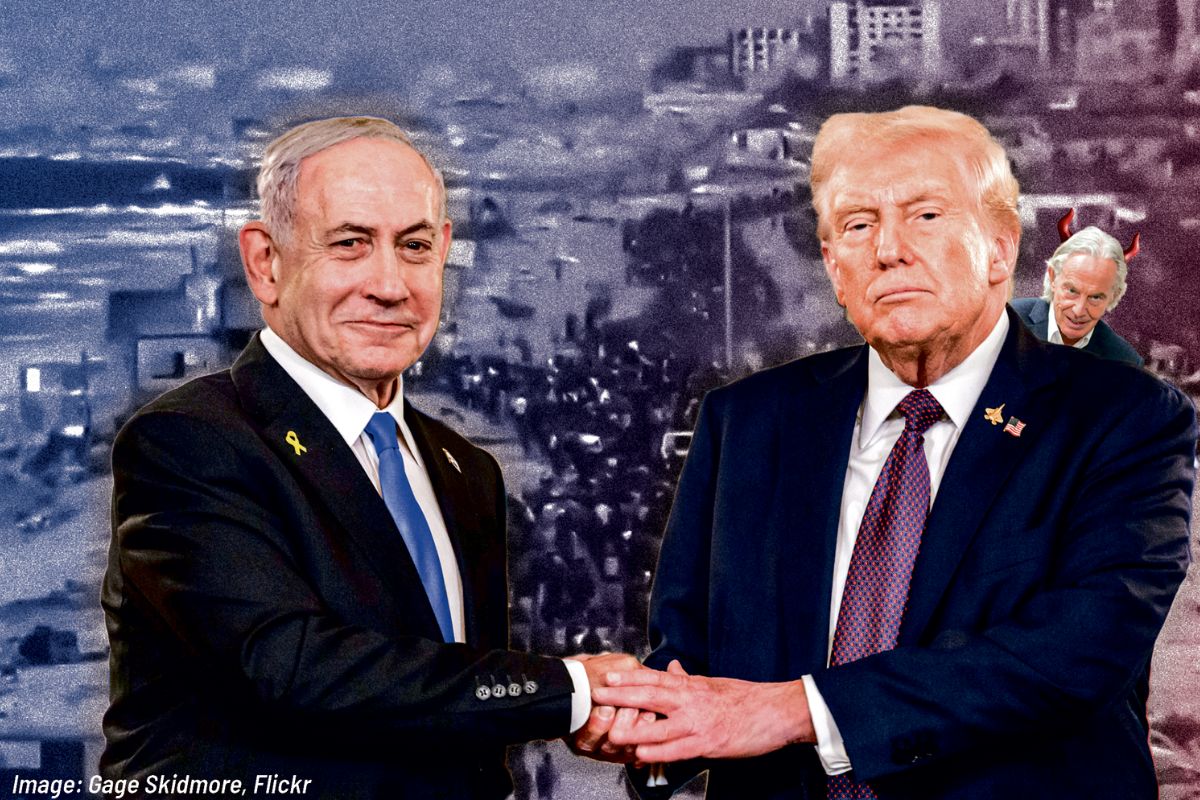NOTE: This article was written just before the confirmation of the new coalition and the ending of the Labour government.
The recent general election in Britain has
produced an unstable parliamentary situation, which is a reflection of
the real instability that exists in society as a whole. Not only did
the result produce a hung parliament with no overall majority for any
party, but Britain could even end up with a Tory/Liberal coalition, the
first time for more than 70 years. (This has now happened – editor)
Britain is facing a calamitous economic situation, and has the
biggest budget deficit in Europe. That is why the ruling class was
looking for a strong Tory government to carry out the draconian
austerity measures needed. Without a strong government facing an
enraged working class, they would have great difficulty in implementing
such a programme of cuts. The Labour government, weak and battered,
could no longer deliver such policies without a massive revolt. The
Establishment were banking on a Tory victory.
Change – no thanks!
These past few years all their efforts have been directed towards
getting a majority Tory government elected. However, as the saying
goes, the best laid plans of mice and men often go astray. The MPs
expenses scandal was clearly “uncovered” in order to damage the Labour
government. It ended up damaging both mainstream parties, and
undermining confidence in the very institution of parliament.
Another important element that the British ruling class did not take
into account sufficiently was that the workers have not forgotten what
the Tories did last time they were in office. In 1997 there was a
massive swing to Labour precisely because ordinary working people were
fed up with the cuts, the privatisations, the anti-trade union laws of
the Tories. Thus, although Cameron tried to present himself as the man
who would bring “change” to Britain, the majority of the electorate
said “thanks, but no thanks”. That is precisely because they knew what
kind of “change” they would bring about: an attack on working class
people.
That
is why the Tories failed to win sufficient support to form a majority
government, with only 36% of the vote and 306 seats. Labour, in spite
of some polls indicating it could come in third, managed to come second
in terms of seats (258) with a 29% share of the vote, only one percent
higher than the historic defeat of 1983.
At that time, the “left” Michael Foot was attacked by the right wing
for producing “the longest suicide note in history”. Then, we were
told, a left leaning Labour Party was unelectable. They then proceeded
to witch-hunt the left, in particular the Marxists, and eventually
ended up with Tony Blair at the helm.
Finally they had an “electable” Labour Party. In 1997 Labour won a
massive victory, and went on to win several other victories in
subsequent years. Those victories were used by the Blairite wing of the
party to strengthen its grip. Anyone in the party that criticised the
Blairites was told that Blair could win elections and “keep the Tories
out”. Now, after 13 years of “New” Labour government, we see how
electable these people are. They have lost power with a similar level
of support to that under Michael Foot! This is a complete condemnation
of right-wing policies and represents a complete rejection of Blairism.
And thanks to the bourgeois carpet-baggers, leaching off the labour
movement, the Tories are once more the main party in parliament.
Nevertheless, in spite of all the sell-outs, cuts, privatisations,
etc., the working class in the industrial urban areas of Britain
rallied to Labour to stop the return of the Tories, still hated after
more than 18 years of Thatcherism. This was reflected in the increased
turnout over 2005, up from 60% to just over 65%.
This increased turnout did not help the Liberal Democrats who seemed
to be experiencing a surge in the polls prior to the election. They had
tried to portray themselves as something new and fresh, something
“clean”. But on fundamental issues of economic policy there are no real
differences between the Liberal Democrats and the Tories, or with the
right-wing of Labour. Instead of gaining seats, they ended up with 57,
five fewer seats than in 2005, with 23% of the vote.
Polarisation
This reveals an important element in the equation. Huge class
polarisation is taking place in British society as the economic crisis
impacts on the weaker layers, on the poor, the unemployed, and the
working class as a whole. This polarisation was expressed in the
elections. The increase of class tensions squeezed the Liberals and the
other remaining parties. The Greens managed to take one solitary seat
in Brighton. The other “independents”, like Esta Rantzen, were soundly
defeated, as were the British National Party.
In spite of massive backing from the ruling class, the tories failed to make the breakthrough they needed. Photo by Walt Jabsco.Even with the support of the Sun
and other tabloid newspapers, who tried to depict Cameron as another
Obama, the Tories failed miserably. They are now being forced to try to
cobble together a deal with the Liberals to form a government. Whether
this will actually lead to a coalition or not, it is not possible to
say at this stage. The other option is a minority Tory government with
external support from the Liberals. However, that would be an extremely
unstable government, always having to seek support for each Bill that
is presented in parliament, never being sure of what majority they
would get.
That is not the kind of government that is required. The bourgeois
understand that the pressures of the world crisis of capitalism require
urgent measures, which involve massive cuts in public spending, sacking
many public sector workers, holding down wages and so on. For the
government to have a chance of getting such a programme passed in
parliament it would require a solid majority. That is why the
Establishment would prefer a coalition, hoping to bind something
together long enough to carry through the austerity measures needed.
But whatever the outcome, it will be a government not of stability but
of crisis.
A closer analysis of the election results are of great interest.
Firstly, they show that neither New Labour nor the Tories were able to
convince the electorate. The 18 years of Thatcherite government prior
to 1997 and the 13 years of Labour government that followed have left
their mark. For more than 30 years the British workers have suffered a
constant attack on welfare and on working conditions. The Blair
government introduced working tax credits and the minimum wage, which
benefited many working class families. However, at the same time, on
all fundamental issues of economic policy it continued on from where
the Tories had left off.
Some on the ultra-left fringes of the labour movement satisfied
themselves with stating that there was no difference between the “three
bourgeois” parties, i.e. Labour, Liberal Democrats and Tories. But that
is not how the working class of this country viewed it. Otherwise how
does one explain the voting patterns, particularly in the industrial
urban centres where the working class is concentrated? When push comes
to shove, the working class always tend to support the Labour Party.
They instinctively regard it, despite all the disappointments of the
last 13 years, as their party, warts and all. For them, at least at
this stage, there was simply no alternative.
The increased turnout was clearly an indication that a significant
layer of the working class, that had previously stopped voting, decided
to come out to block the Tories. Not only did they successfully deny
the Tories a majority in parliament, but in most of the urban town
councils they voted Labour back in! In some areas there was even a
swing to Labour.
Nick "the Kingmaker" Clegg. Photo by Dave Radcliffe.Where
the left Labour candidates stood they managed to increase their vote,
most notably John McDonnell (who increased his vote by 2,500) and
Jeremy Corbyn (who increased his vote by 8,000). This confirms what the
Marxists have always said, i.e. that when left policies are combined
with the name of the traditional mass party of the British working
class this has a big impact.
In Scotland, there was a swing to Labour as Labour MPs were returned
with massive majorities. Labour took back Glasgow East from the SNP. In
Glasgow NE, Labour increased on its by-election result to a 15,000
majority over the SNP. The Tories only managed to hold on to one seat
in Scotland. The boasts of the nationalists that they would gain 20
seats were completely dashed, winning only the same number of seats, 6
in all. The turnout in some parts of Scotland was 77%, a substantial
rise on the previous election. The Central Belt of Scotland remains a
red belt. This again confirms the point that workers decided
consciously to come out to block the Tories by supporting Labour.
In Wales, however, Labour lost four seats to the Tories, increasing
their representation from three to eight, while Blaenau Gwent was won
back to Labour. However, Labour still has 26 seats, the biggest party
by far.
Local elections
As we have seen, in the local elections, Labour did well. They
managed to seize back Sheffield and Liverpool councils from the Lib
Dems and wiped out the British National Party in Barking and Dagenham,
which lost all its 12 councillors. The BNP were also hammered by Labour
in Stoke, forcing it into third place, and in Burnley. Across the
country they lost 24 seats and only managed to hold on to a mere 19.
This shows the weakness of the BNP which can be swept aside when the
class moves. Again, the analysis of the Marxists on the so-called
“threat of fascism” was confirmed. We have explained that the
historical basis for fascism has been whittled away during decades in
which the overwhelming majority of the population has been
proletarianised. Not so long ago the media was full of reports about
the “racism” of working class people in places like Dagenham. Now what
will they have to say? With a greater turnout of working class voters,
the BNP was smashed, and all its seats were lost to Labour.
Labour succeeded in gaining fourteen councils, including Enfield,
Coventry, Doncaster, Hartlepool, Oxford and St Helens, and increasing
its number of councillors nationally by nearly 400. The London borough
of Newham is 100% Labour, with all the opposition cleared out. It also
regained Barnet. In Tower Hamlets, we have more Labour councillors
today than at any time since 1982. In London as elsewhere, the areas
where most Blacks and Asians live came out solidly for Labour.
Labour held on and advanced in most of its working class
strongholds. In Barking, Nick Griffin of the BNP was standing, hoping
to build on their earlier successes in the council elections. But
Labour pushed Nick Griffin into third place, a humiliating experience
which will no doubt provoke a crisis inside the BNP, and possibly even
splits at a later stage.
It is a fact that the workers rallied to Labour to defeat the
racists. The UAF’s role was minimal, simply trying to frighten people
by shouting about the “dangers of fascism”. Apart from a few leaflets,
all their propaganda was concentrated upon calling for workers to vote
anything, including the Tories or UKIP, but not the BNP. This
reveals the total lack of understanding of the UAF as to what is really
required. Right-wing Tories and UKIP are equally racist. Therefore to
call for a vote for these parties as if they were somehow better is
utter nonsense, and working class people cannot connect to such
propaganda.
What the vote in Barking and Dagenham reveals is that after a period
on the council the BNP has been exposed somewhat, and despite a poor
official campaign by Labour, workers rallied to vote Labour into
Parliament and the council, taking 51 seats out of 51.
The total vote nationally for Labour was 8,600,000, with a loss of
91 seats. This is a clear defeat for Brown (and Blair before him) and
his de facto Tory policies. However, as we said, the party held on to
its core vote and even strengthened its position in its traditional
working class strongholds. This is after 13 years of New Labour
government which has squandered the massive support gained in 1997,
where Labour had gained a majority of nearly 180 seats.
Disillusionment with the Blair/Brown government eroded Labour’s
support, opening the way for another Tory victory. This is the
consequence of right-wing policies based upon capitalism. This is the
real lesson for Labour activists. Only a socialist programme can answer
the needs of working people, and that requires a complete break from
New Labour policies.
No doubt, many Labour Party activists and many in the ranks of the
trade unions will have heaved a sigh of relief and not seeing the party
trounced as they had been accustomed to expect over the past couple of
years. But is this what many in the labour movement voted for back in
1997? Can we be happy with the fact that “we didn’t do as badly as we
had expected”? No, what is required is a serious analysis of the past
13 years, of the policies adopted and the effect they had on the
electorate.
Time to change course
We cannot be satisfied with this. What we need is to develop a
completely different programme and set of policies, based on the
principles of socialism, on the principle that big business should pay
for the crisis. That can only mean a programme based on the key demand
of nationalisation of the commanding heights of the economy under
democratic workers’ control and management. That is the only way we
will be able to defend jobs, schools, hospitals, pensions and solve all
the ills provoked by this rotten, stinking corpse of capitalism.
Another lesson of this election is the failure of all those who
attempted to build an alternative to Labour. Once again, this election
has proved the point made repeatedly by the Marxist tendency that it is
not possible to simply jump over the traditional mass organisations of
the working class. They have established deep roots which will not be
displaced by the establishment of small left groupings on the fringes
of the movement, despite more than a decade of Blairite policies.
While we fully appreciate the frustration and disgust with New
Labour by millions of workers, when the chips were down, they turned
out to vote Labour as there was NO REALISTIC ALTERNATIVE. The choice
for them was either vote Labour or not to vote at all. That is why
groups like RESPECT, Socialist Alternative, Scottish Socialist Party,
Socialist Labour Party, Alliance for Workers’ Liberty, Workers’
Revolutionary Party and Trade Unionist and Socialist Coalition (TUSC),
failed to make any impact. In fact, their results were worse than in
the past. This is not a reflection on the integrity of the individual
candidates who stood, many of them good class fighters, such as Rob
Williams, but the fact that where the class perceives a danger from the
Tories, they will rally to their traditional organisation and ignore
these fringe groups. This is especially the case in working class areas.
In London, George Galloway, the only Respect MP lost his seat to
Labour and came third after the Tories. Given their poor showing and
the loss of its only MP, it is quite possible that RESPECT will now
tend to disintegrate. The SSP in Scotland continues to limp along, but
it has long lost any hope of making the breakthrough it originally
thought possible. Many believed that they could at least be the second
workers’ party in Scotland. However, the 3,157 votes it achieved across
10 constituencies, which averages 315 votes per candidate, were even
less than the poor showing in the last election in 2005. So rather than
strengthening their electoral base, despite everything, it has got much
weaker and in reality reduced them to an irrelevant fringe group.
The Socialist Alternative, which is the Socialist Party of England
and Wales and part of TUSC, stood in some seats. In Coventry,
Huddersfield and Lewisham they had five councillors who were defending
their seats this time around. In every case, apart from one, they lost
their seats to Labour. In contrast, in Coventry the Labour Party gained
six seats, while the SP lost one of its two, to Labour. This
was a big blow considering that these seats were held up by the SP as
the way forward, where socialist candidates could defeat Labour.
One explanation provided for this setback seems to be that there was
an increased turnout of those voting. What this means is that they are
saying that when more workers turn out they vote Labour! And they vote
Labour to stop the Tories, i.e. according to the sectarian logic, the
workers vote for one bourgeois party (Labour) to stop another (the
Tories). This simply doesn’t make sense. If there ever was a moment
when small forces standing to the left of Labour should have had a
chance it was in these elections. Labour has been in power for 13
years; many workers are disillusioned with Labour; and some should be
looking for an alternative. Instead what happens? Not only do the
workers turn to Labour, they even vote out the few independent lefts
that had been elected previously.
The Marxists have explained many times that when the mass of workers
– who previously have not moved – begin to take political action they
turn to their traditional mass organisations. This is precisely what
has happened in these elections.
In Swansea West, the TUSC candidate was Rob Williams who is the
convenor of the former Ford plant and was victimised last year but
reinstated. He was well-known as a class fighter, but despite this he
only managed to pick up 179 votes (0.5%), less than the workers he
represents in his own workplace. He came ninth out of nine candidates.
Labour, described by Rob as a “capitalist party”, won the seat with
over 12,000 votes.
In Coventry South, the TUSC candidate gained 691 votes (1.5%), while
Labour picked up over 19,000 (41.8%). In Coventry North East, the TUSC
got 370 (0.8%), while Labour got nearly 20,000 votes (42.8%). In
Coventry North East, Dave Nellist, the ex-Labour MP, stood for TUSC and
achieved 1,592 (3.7%), but the Labour candidate got over 21,000 votes
(49.3%).
Dave Nellist, the most well-known TUSC candidate, who was kicked out
of the Labour Party, got around 10,000 votes when he challenged Labour
in 1992, as the outgoing Labour MP. People regarded him as
the real Labour candidate in those conditions. But as the years have
gone by his vote has fallen consistently.
In 2001, Labour got 22,739, while Dave Nellist polled 2,638, and the
BNP got 737 votes. In the 2005 election, Labour scored 21,178, but
Dave’s vote went down to 1,874. There was no BNP candidate that year.
But today, Labour got 21,384, an increase on the last election, while
Dave went down further to1,592 votes. The BNP got 1,863 votes. This
speaks volumes about the loyalty of the working class towards the
Labour Party, despite everything. And Dave Nellist was the best placed
candidate, having been an MP previously, who was widely respected in
the Coventry labour movement.
If you add up the votes of the TUSC candidates across the 40 odd
seats they stood in, their combined vote was only HALF the vote
achieved by John McDonnell alone in Hayes and Harlington. After all the
effort put in and the money spent, this is what they managed to
achieve. It speaks for itself.
In Manchester Central, while Labour got over 21,000 votes (52.7%),
the SLP got 153 votes (0.4%), the WRP got 59 votes (0.1%), and the
Socialist Equality got 54 votes (0.1%). These left groups are achieving
votes on a par with the Monster Raving Looney Party. The same goes for
Camberwell and Peckham, where Labour picked up over 27,000 votes, while
the SLP got 184 votes (0.4%), the WRP got 211 votes (0.5%) and the
Alliance for Workers’ Liberty manage 75 votes (0.2%).
In
spite of the best efforts of New Labourites like Peter Mandelson, the
Labour Party remains the party of the working class in Britain. Photo
by the World Economic Forum.If there was ever a time when
these fringe groups should have made some kind of gains or even break
through, it is now. After 13 years of right-wing Labour government
where there is widespread disillusionment, if there was to be any real
alternative, then it was now. However, events have proved otherwise.
While Labour’s national vote has gone down, and the party has lost more
MPs than at any time since 1931, the Labour core vote has remained
firm. By and large, the workers have rallied to Labour in their
traditional heartlands.
This more than ever confirms the fact that it is not possible to
write off the Labour Party as many on the far left have attempted to
do. The idea of creating an alternative to Labour on the electoral
front has once again completely failed. We must learn the lessons, that
only through a struggle within the trade unions and the Labour Party
can the party be changed. The mass of the trade unions are affiliated
and finance the party. It is time they took it back for the working
class. The Blairites have been given a bloody nose. We should use this
defeat to further the struggle to clear out the carpet-baggers and
transform the party into a fighting organisation of working people.
This must go hand in hand with the fight for socialist polices as the
only alternative to capitalism.
For years we have argued that there is no short-cut to building a
genuine fighting party of the working class. We have been going against
the stream for some years, arguing this point. Many on the ultra-left
fringe laughed at the idea that what is required is patient work in the
mass organisations. So they attempted various options, such as the
Socialist Alliance in the past and more recently No2EU. In these
elections they tried it again, either as TUSC, Respect, or the various
other formations. All have failed.
Class struggle
Does that mean that there is no other road? No, as Lenin explained,
our task is “to patiently explain” and build up a Marxist tendency
rooted inside the mass organisations, the trade unions and the Labour Party.
The period we are entering will prove to be the most turbulent in
history. The crisis is severe, as the events in Greece confirm.
Intensified class struggle is the perspective ahead of us. There will
be ups and downs, periods of intense conflict, with major strikes and
even general strikes, followed by periods of temporary retreat. But in
the process the workers will start to draw conclusions. Whatever
government is formed, whether a minority Tory government, or a
coalition of some kind, the programme will be the same. The bourgeois
are preparing for war, war of the classes. The workers will not take
what is coming lying down.
This will be a period in which the ideas of genuine Marxism will be
more relevant than ever, and it is our task to take these ideas to the
workers wherever they are, in the trade unions, in the workplaces, and
also within the Labour Party itself.






